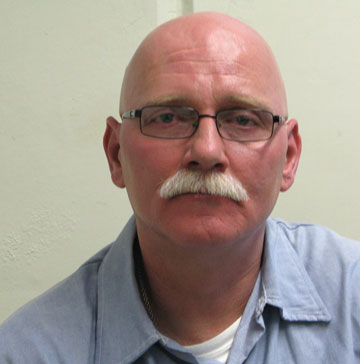|
|
IT’S TIME TO END LIFE WITHOUT PAROLEBy Kenneth E. Hartman
“There is no true justice unless mercy is a part of it.” Any conversation about complicated public policy questions inevitably involves numbers, and the problem of the proliferation of life without parole prison sentences is, sadly, no exception. According to The Sentencing Project, a well-respected, nonpartisan Washington think-tank, the Justice Department’s own Bureau of Justice Statistics, and the ACLU’s National Prison Project, among others, life without parole is the fastest growing form of life sentence. There are now roughly 50,000 men and women sentenced to life without parole in this country, which is more than in all the rest of the countries on this planet, combined. Within the criminology profession there is a growing debate about the ethics of sentencing large numbers of people to die through the method of imprisonment. But, for many years, life without parole has served as the preferred “alternative” to death by other methods - the electric chair, the gas chamber and, now, lethal injection. The orthodoxy of seeing life without parole as the logical step-down from the other methods of the death penalty has come under increasing attack from both academe and a fast growing movement of civil rights activists. The heart of the debate boils down to definitions. Traditionally, a death sentence was executed in an action, such as a beheading or a hanging. The condemned prisoner was kept isolated from other prisoners on a death row (literally, a row of cells near the place of execution) until the sentence was carried out. Life without parole, on the other hand, is a lot less straightforward. Prisoners sentenced to this other death penalty are housed among other prisoners and the execution of their punishment is carried out over a period of decades, in most cases. When life without parole was first instituted in California, back in 1978, it was viewed less as a kind of death sentence and more as a reinforced life sentence. I was advised that after 12 calendar years I would appear before the parole board. In the intervening years that initial parole board appearance was rescheduled out to 30 years, and then done away with completely. The iron law of unintended consequences has worked to create a festering problem inside the vast prison systems of this country - what to do with tens of thousands of prisoners sentenced to die, eventually, regardless of their own rehabilitation or failing health, or anything else. It’s irrational, at least, to just watch us all wither away. When the federal court panel overseeing California’s reluctant compliance with population reduction in its prisons called for releasing those 65 years and older with a minimum of 25 years served, the first response from the Department of Corrections was to announce that both death row and life without parole prisoners were not eligible. No pressure group supported this decision more than the professional death penalty abolitionists, for whom life without parole is necessary to their quest to end lethal injection executions, once and for all, collateral damages be damned. As the founder and Executive Director of The Other Death Penalty Project, and as a life without parole sentenced prisoner who’s served more than 35 years, I can personally attest to the great waste of resources and the basic unreasonableness of this sentence. Whatever deterrent effect it may have had is long gone, and how society is made more secure by the endless suffering of thousands of old men and women isn’t clear to me. My experience has taught me that all forms of the death penalty need to be abolished. All prisoners should have the possibility of earning their freedom through their own actions. What this would mean, in practice, is all life-term prisoners having the opportunity to participate in meaningful rehabilitative programs, to receive substance abuse and mental health treatment necessary to full recovery, and the chance to appear regularly before an objective hearing board for consideration of release to parole. The purpose of the prisons must be transformed from stark human warehouses into places of healing and growth. Only in this way can the penal system be transformed from its current state of expected failure to serving the interests of society as a whole. And, finally, criminal justice system officials and death penalty abolitionists all need to stop pretending that an execution by a different name is any less cruel or less barbaric. Kenneth E. Hartman (kennethehartman.com) is the author of the award-winning memoir “Mother California: A Story of Redemption Behind Bars.” Both he and his daughter are featured in TOE TAG PAROLE: TO LIVE AND DIE ON YARD A, which premieres Monday, August 3 at 9 p.m. ET/PT on HBO. To schedule an interview with Alan and Susan Raymond, |
